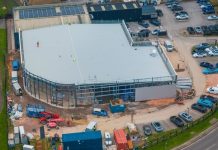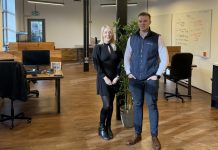The noise and distraction of open plan workplaces are preventing employees from focusing on individual tasks requiring high levels of concentration and minimum disruption, according to research from Unispace, the global design firm.
The findings come as part of Unispace’s research of more than 11,000 workers in a global study of working practices and workplace design.
According to Unispaces’s research, the issue of noise has actually become much worse over the last 12 months, with more workers complaining compared to the same research conducted in 2016.
Survey respondents flagged noise (15%) as the primary cause of inefficiency during the working week, a number that has risen by four per cent in just 12 months. Second to this was a lack of quiet areas (13%), a lack of privacy (9%) and 7% felt that the temperature and air quality of their office was also a factor.
“Our research shows that the vast majority of our time at work is based on the need to ‘focus’ — more than 60% of the working day.” said Simon Pole, Unispace Global Director, Design. “The workplace has changed radically in the last few years, but it may have gone too far now. Collaboration is obviously a central tenet of many modern spaces and in this environment, creating a fusion of ideas and socialisation is key. But for the majority of everyday business tasks, workers need space for focus, calm and solitude.
“Increased noise, a lack of privacy and quiet areas consistently show up as the top three employee complaints in open environments,” continued Pole. “This is particularly problematic as most employees’ report that they engage in focus work more than any other work mode.”
Unispace research has found that 60% of the average working day is devoted to individual task-focused work; 25% to collaboration, 7% to socialising and the same for learning.
Natasha Bonugli, Unispace Regional Principal, Design said: “Designers have to question why the sector is devoting so much space to collaboration when most of the working day is given over to tasks that require focus and concentration.”
Open plan offices are now the most popular type of workspace with 31% of the total number. Cubicle style environments came in second at 18% and private offices at 13%.
Participants in the research indicated that even routine tasks which require concentration, such as filing, creative work and training / learning take up more time during their day (10%) than collaborative tasks such as group meetings, presentations and audio conferences. By comparison, small group meetings still only require just over eight per cent of the total working day.
In professional services firms, focused activities made up 71% of the working day in the US and 58% in the UK. For technology firms, as much as 55% of time was given over to focus-led tasks. Collaboration made up between 25% to 29% in both sectors.
The research shows that people work in different ways based on their roles; some are flexible, some are highly mobile, others are more desk orientated. Each requires a varied work mode: an environment supportive of their specific tasks and the time in which they have to achieve them.
“Open, collaborative work environments promised us increased employee performance, higher levels of productivity, happier employees and happier CFOs — as these environments were typically more efficient,” explained Albert De Plazaola, Unispace Global Principal, Strategy.
“But staying up to date with the latest trends in the workplace is critical for understanding the evolution and future of our work environments,” said De Plazaola. “We need to think critically around how and if the latest design trends and fashions can elevate the experience of employees. For example, progressive workplace designs for social media or tech companies may not be appropriate or culturally suitable for professional services firms. Similarly, napping pods and zen lounges may do wonders for overworked software engineers, but would miss the mark entirely if placed in the office of a conservative management consulting firm.”






















